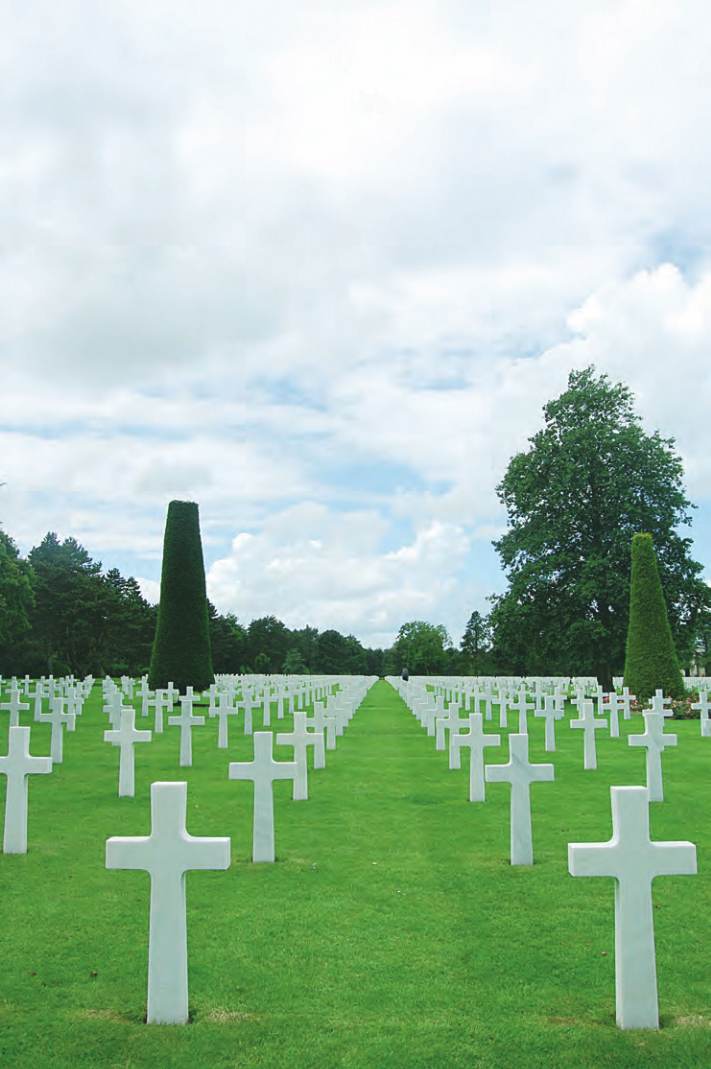Basic HTML Version



Pegasus Bridge
Colonel Warman is easy to spot, wearing his military red trousers,
signature straw hat, and carrying a gnarled hickory walking stick. He is an
unreconstructed and unapologetic fan and patriot of the British Empire, a
true imperialist and proud of it.
We begin our tour in a café across from Pegasus Bridge, at a site
near where the squadron of British Sixth Airborne gliders landed the
evening before D-Day. The first thing those airborne soldiers did was
secure the bridge – Pegasus – that spans the Orne Canal, a strategic
structure between the city of Caen and the port of Ouistreham. The
soldiers also occupied the very first building to be liberated in France,
the home of Georges and Thérèse Gondrée, who welcomed the
airborne glider troops that landed under the command of Major John
Howard beginning at 11 o’clock the night of June 5 by unearthing
and serving the champagne he had squirreled away for just such an
occasion.
The reason Colonel Warman and I are having coffee in a café
across
the street and not
in
the Gondrée Café is because “if
Arlette
[daughter
of Mr and Mme Gondrée and now owner of the café] saw me,” Warman
says, “I would probably be asked to leave.”
He explains that the Gondrées had two daughters, Arlette and
Georgette
, 3 and 4 years old at the time of the landings. “When the end
of the war came, we built a museum,” Warman relates. “We put all the
bits and pieces of war in that museum, but, when the Gondrées died,
the daughters took it over. The daughters had a disagreement and one
daughter - Arlette – took it over. She and the committee [the museum
committee that Warman is a member of ] had a disagreement over the
rent – which went up year after year,” he says. The rent eventually became
untenable, so Warman and his committee raised money to purchase a
building across the canal about ten years ago. “We took all our stuff from
the old museum and put it into the new museum and there’s been a
lawsuit ever since,” he reports.
“Arlette claims she owns the Jeeps, parachutes, and various
implements of war that had been collected for the museum,” Warman
continues, “and of course we think it’s British Government property.
But there we are,” he concludes with a hint of sarcasm. “These things
happen. She is a very nice woman. Very nice looking.”
We finished our coffee and walked over to the marshy field where the
gliders landed; we inspected the full-sized glider on display, one of dozens
that each carried some 28 airborne troops or anti-tank guns, and admired
the new museum nearby.
Often irascible, and always passionate, Normandy tour guide Colonel Oliver
Warman is a unique character who wears red trousers from his Special Forces
duty days and a signature straw hat. He is seen here with his accompanying
walking stick pointing out the crumbling 100-foot cliffs near Pointe du Hoc that
a U.S. Ranger Assault Group led by Lieutenant Colonel James Rudder climbed
using fishermen’s nets rather than grappling hooks.
42
winter
|
spr ing
At last count, there are 9,336 gravestones at the American Cemetery above Omaha
Beach at Colleville-sur-Mer; the three-foot-high Carrera marble gravestones are
mostly crosses, although there is a good smattering of Stars of David as well

